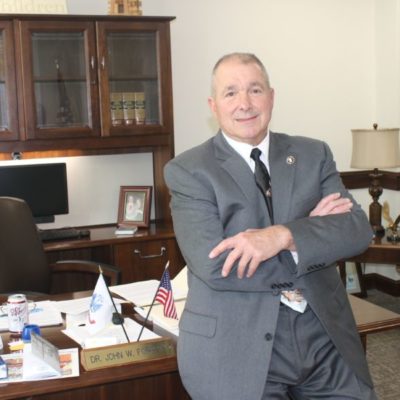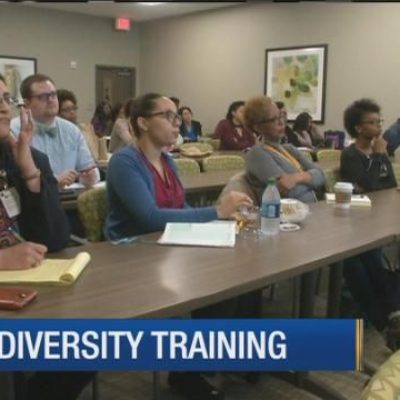Investing in Principal Talent Pays Off in Higher Math and Reading Scores, Study Finds
Principals who’ve had attention at every point in their development as a school leader—including selection, preparation, hiring, placement, and coaching after they are on the job—were linked to stronger reading and math achievement and to longer tenures in their jobs at the helm of schools.
Those clear findings—from a new study of six school districts that made heavy investments in strengthening their cadre of school leaders—underscore the key role principals play in their schools’ academic success. The report, by researchers at RAND Corporation, looked at the six-year, $85 million “principal pipeline” initiative supported by the Wallace Foundation. (Coverage of education leadership in Education Week is supported in part by the Wallace Foundation.)
Schools that got new principals in 2012-13 or later as part of the pipeline initiative outperformed other schools in their states that were not in the program by 6.22 percentile points in reading and 2.87 percentile points in math three years after the new school leader was hired, researchers found.
RAND also found that new principals in the pipeline districts were 5.8 percentage points more likely to stay in their schools for two years than new principals in non-participating districts, though there was variation among districts.
Perhaps most significantly, the report found statistically significant academic growth in the schools that were among the lowest-performing in the pipeline districts that had gotten new principals. And while new principals who were products of the initiative posted the most growth, other school leaders in the pipeline districts also saw gains.

That specific finding exceeded the Wallace Foundation’s original hypothesis on how effective principals could boost achievement when it launched its initiative to work with districts to thoughtfully prepare, select, place, and support principals.
“What these results say is that principal pipelines are a strategic and systemic approach to create districtwide student achievement” growth, said Jody Spiro, the director of the foundation’s education leadership program.
“All principals in the district benefitted…,” she said. “They benefitted from having clear leader standards. They benefitted from these more rigorous hiring procedures, from being better matched to their schools, from having evaluation systems that the research tells us the principals perceived as fair and useful. It became bigger than…a ‘training program’ for principals. It became a whole system approach.”
‘Bang for the Buck’
The districts in the program were Charlotte-Mecklenburg, N.C.; Denver; Gwinnett County, Ga.; Hillsborough County, Fla.; New York City; and Prince George’s County, Md.
Their results mirror what’s happened in Chicago, where school leadership has been an improvement strategy for 20 years, said Heather Y. Anichini, the chief executive officer of The Chicago Public Education Fund.
One of the validating findings in the RAND analysis was the academic gains among the lowest-performing schools—those most in need of effective principals, Anichini said.
“That’s something we’ve been seeing here for a while, too, but it isn’t necessarily something that’s focused on a lot in the literature,” she said.
“If it is the kind of strategy that can really make a difference, not just generally, but specifically in places where students are struggling, then it’s something we must pay more attention to.”
That finding may seem to fly in the face of research and conventional wisdom suggesting that newly minted principals shouldn’t lead struggling schools, said Doug Anthony, an associate superintendent in Prince George’s County.
But in the pipeline districts, new principals went through rigorous selection, got relevant training, and were matched based on their strengths and the school and community’s needs, and they were provided with mentor and other support systems, said Anthony.
“I think this actually dispels that to some extent, and that if you actually equip people and build leaders who have already come with a certain skill set and sharpen that skill set and are particular about how they are developed and identified and supported, you can actually see bang for the buck in student achievement even in your toughest schools,” Anthony said.
Prince George’s County made dramatic changes to its school leadership program. It revised its standards for leaders which guide how it evaluates and supports aspiring and sitting principals. It created data systems to track principals’ performance and expanded partnerships with university-prep programs.
The RAND researchers said they know of no other districtwide improvement strategy that yielded such significant academic results on such a large scale.
Collectively, the districts in the pipeline initiative serve nearly 1.7 million students.
The effects of the pipeline were evident early, another key finding, Spiro and others said.
And districts can start reaping the gains right away.
While setting up a preparation program takes time, districts can get early wins by sharpening leader standards, matching principals’ skill sets with the needs of schools, and retooling the work of administrators who manage principals.
“Every district has something of a pipeline because they all hire principals, but it’s a matter of if it’s systemic,” Spiro said.
The program was also relatively affordable for districts, the report found. Over five years, the initiative cost $210 per student if looking at its impact districtwide and $373 if looking solely at students in schools with principals who received the full “treatment” of the initiative.
RAND’s research did show varied results. Math scores in one unnamed district, for example, were negative and researchers found positive but not statistically significant effects in math achievement in two others. There was also variation in the study’s findings on principal retention.
Return on Investment
Glenn Pethel, an assistant superintendent in the Gwinnett County schools, said that districts and state education agencies should pay attention to the report.
“It should cause districts to stop and reflect and think about where they are making investments,” Pethel said. “I hope that it would cause them to see that investing in a principal pipeline does have a significant return on investment.”
That’s not always an easy pivot for districts, which tend to focus, understandably, on teachers. District leaders also gravitate to programs that can yield quick results. And building pipelines relies on relationships, which pose a challenge in a sector susceptible to frequent turnover.
Cultivating leadership has always been a district priority in Gwinnett County, Pethel said. The district’s superintendent, J. Alvin Wilbanks, has been in his position for more than two decades, and the district is always looking to spot and shape new talent.
When Pam Williams moved from Palm Beach County, Fla., to Gwinnett County in 2006, she was not looking to become a principal.
But her principal quickly spotted her talent in the classroom and her knack for team-building. He brought her onto his leadership team and steadily supplied her with books on instruction and leadership.
He urged her to apply for the district’s aspiring principals program.
Williams is now principal of Bethesda Elementary School, which was among the bottom 20 percent of the district’s schools when she took over in 2013.
In the last two years, it’s consistently landed in the top 20 percent of the district’s schools and among the top Title 1 schools in Georgia.
Williams credits the district’s two preparation programs in which she participated—which were developed during the pipeline initiative and featured experts from the district’s curriculum staff, sitting principals, and other building leaders, and the superintendent as lecturers.
Her mentor during her first two years on the job was “priceless,” she said.
While she had her own ideas on how to turn around the school, its success is mainly due to the preparation program and district support, she said.
“Anything that I’ve implemented was definitely not straight from my brain, that’s for sure, she said. “It was definitely ideas that I learned from the program.”
[Read more at Ed Week]


